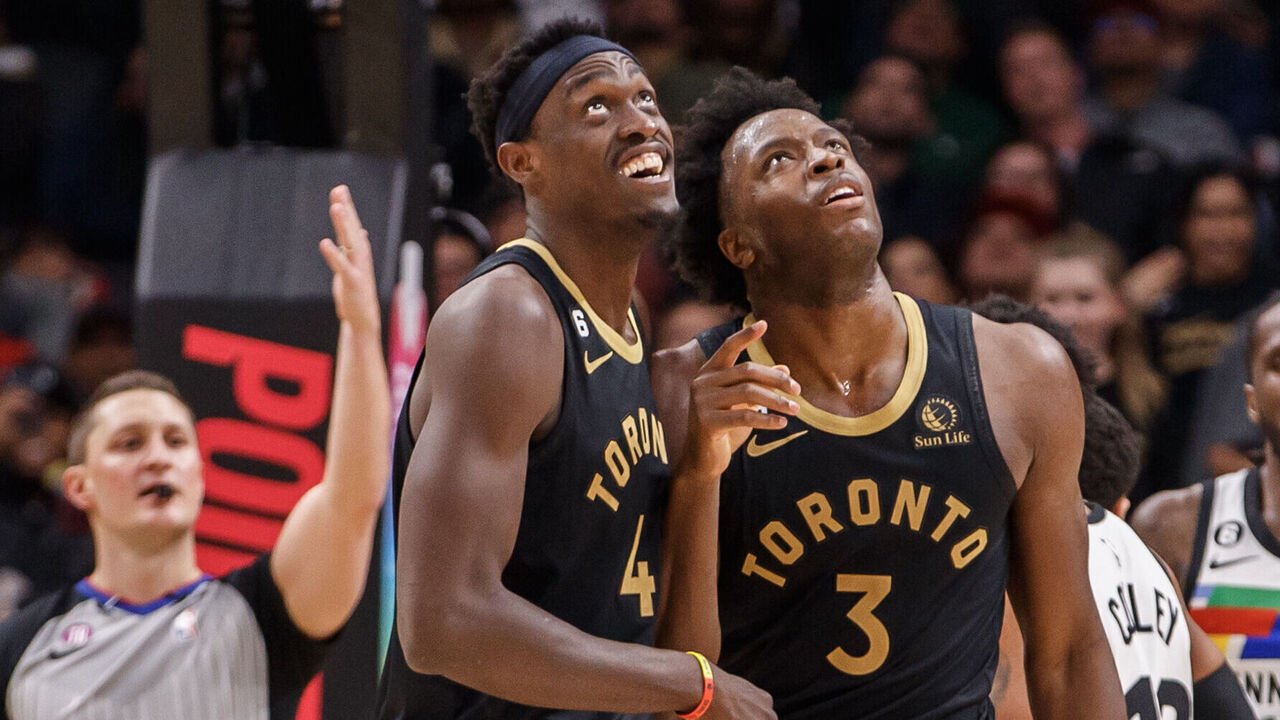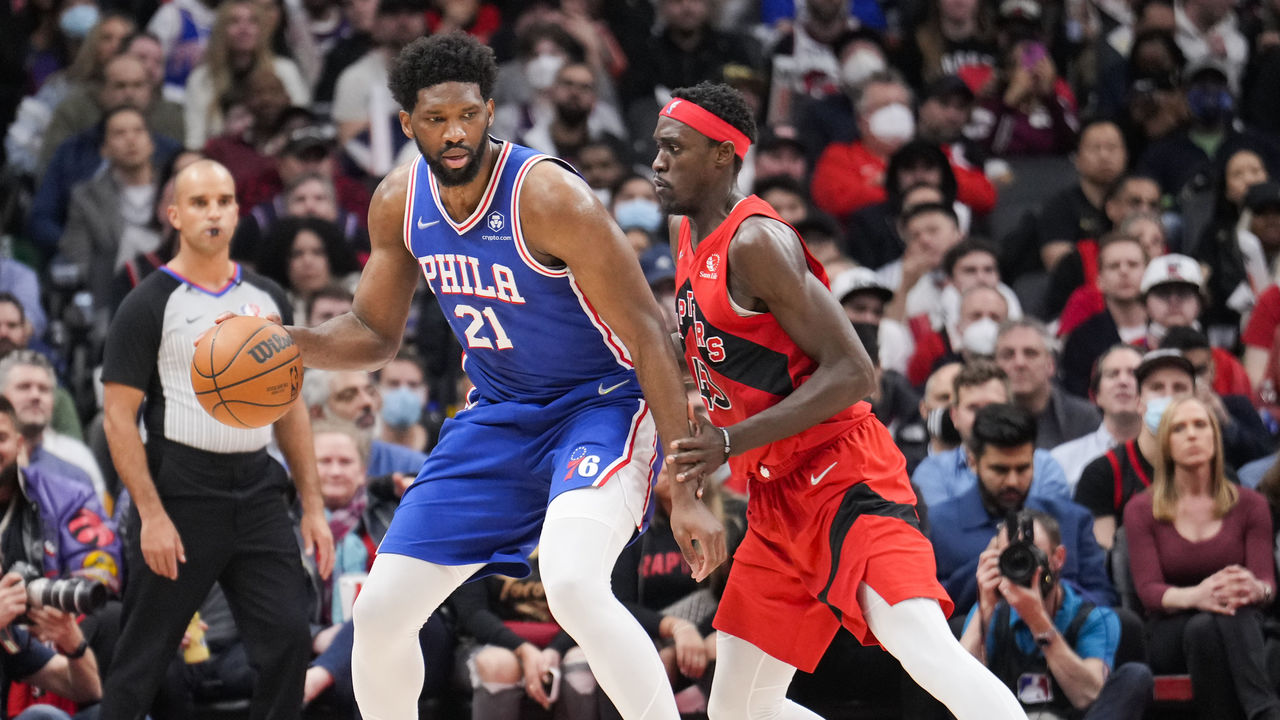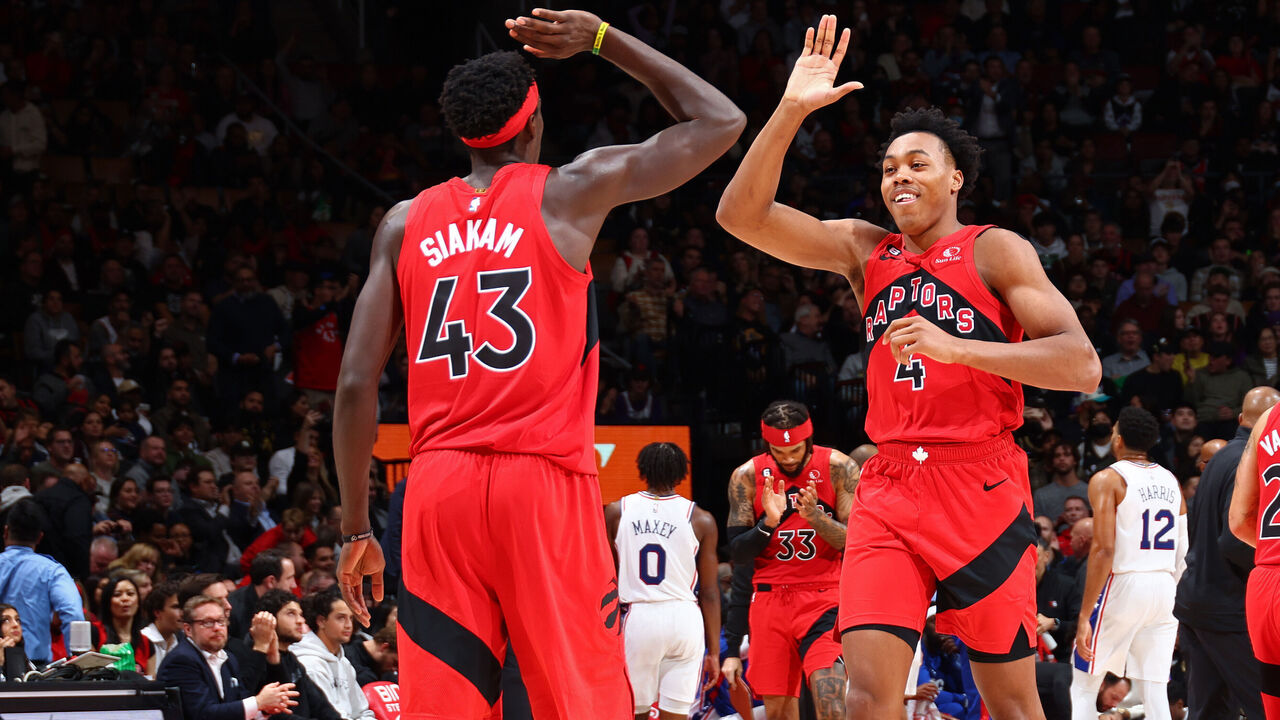Deal or no deal? The Siakam trade conundrum
Welcome to Deal or no deal?, our annual trade-season series ahead of the NBA's Feb. 8 deadline. Its purpose is to find sensible trade partners, both from a team-to-team and team-to-player perspective. As this series unfolds over the next couple months, we'll propose specific trades, but to tip-off our 2023-24 edition, we're examining why a deal for Raptors forward Pascal Siakam may be easier said than done.
Siakam's likely to be the best player on the trade block this season, but that doesn't mean the Raptors should expect a haul in exchange for the two-time All-Star. As a pending free agent, Siakam's status is as much a conundrum for prospective trade partners as it is for Toronto.
Trading for a half season of superstar production is one thing, but Siakam's more of a secondary star. And moving precious trade capital for what could be a half-season rental of a borderline All-Star is typically reserved for the league's elite inner circle - franchises already all-in this season, with little concern for anything beyond the spring.
Even for teams in that exclusive club, Siakam being a non-shooting, on-ball star makes him a clunkier fit than a low-usage 3-and-D player like fellow Raptors forward O.G. Anunoby. And that's not downplaying Siakam's excellence. The two-time All-NBAer can be something like the second option on a championship team: a mismatch-hunting force who can make plays for others while providing a significant boost to a club's defensive versatility. But players like Anunoby are more plug-and-play types and would likely be less disruptive as midseason acquisitions.

The Oklahoma City Thunder and Indiana Pacers each make sense on paper as Siakam landing spots, but as small-market risers who may prefer patience and more long-term certainty, would young players like Cason Wallace, Bennedict Mathurin, Andrew Nembhard, and Jarace Walker (among others) be on the table without some sort of indication Siakam would re-sign with his new team this summer?
Even if the Kings were confident they were adding Siakam to their long-term core with De'Aaron Fox and Domantas Sabonis, the potential spacing issues arising from a frontcourt featuring Siakam and Sabonis would likely make Sacramento uneasy about parting with sophomore sharpshooter Keegan Murray.
No team has been linked to Siakam more than the Atlanta Hawks, but it's a safe bet 22-year-old breakout star Jalen Johnson is off limits. Would a package centered around AJ Griffin and/or rookie Kobe Bufkin satisfy Toronto? Given the redundancy of forward De'Andre Hunter on a Raptors roster that features Scottie Barnes and Anunoby, Toronto would likely prefer the team-friendly contract of shooting guard Bogdan Bogdanovic for salary-matching purposes. But why would Atlanta part with the Sixth Man of the Year candidate while making a win-now trade?
Prying draft capital and two of Golden State's four promising youngsters - Jonathan Kuminga, Moses Moody, Brandin Podziemski, and Trayce Jackson-Davis - out of The Bay could conceivably entice the Raptors, but including Chris Paul's non-guaranteed contract for salary-matching purposes likely eats away at too much of the Warriors' depth.
There's also Miami. Would a young big man like Nikola Jovic, draft picks, and Raptors great Kyle Lowry's expiring contract get a deal done between the Raptors and Heat?

If no youngsters on the table interest Toronto, could a contender like Philadelphia win the bidding with draft capital alone? Trading James Harden left the 76ers in an advantageous position: in addition to owning extra picks, they have expiring midsize salaries to make the math work if they want to trade for a major in-season upgrade. As a pending free agent, Siakam also wouldn't eat into Philadelphia's boatload of 2024 cap space.
In terms of finding a team whose title odds Siakam can legitimately swing, the Sixers may make the most sense; they can afford to add an impact star while assuming the least amount of risk.
Hypothetically, if the Sixers landed Siakam by sending Toronto multiple picks (the least favorable of OKC, Houston, and the Clippers' 2026 first-rounders; swap rights in 2028; and a 2030 first-rounder) along with the pooled expiring contracts of Marcus Morris, Nicolas Batum, and Robert Covington, Philly could finish this season with a superteam-like starting lineup of Siakam, Joel Embiid, Tyrese Maxey, Tobias Harris, and De'Anthony Melton. And they'd still have the cap flexibility to add a third star around Embiid and Maxey for 2024 and beyond. If it played out swimmingly, they could even re-sign Siakam.
Raptors fans may find this scenario ludicrous - Toronto wouldn't acquire a single usable rotation piece going forward - but it's probably the most draft capital the team can get for Siakam right now. Heck, Sixers fans may think such a deal for Siakam isn't worth it, given Philly already looks like a contender and could sign Siakam outright this summer.

These are murky waters for the middling Raptors to traverse, with only bad options left in front of them. They can trade one of the best players and development stories in franchise history for pennies on the dollar. They can watch one of the last remnants of their championship core walk for nothing in free agency a year after Fred VanVleet did the same. They can overpay Siakam to remain in Toronto, or even extend him now and trade him at a somewhat higher price during the offseason, but how much longer can Masai Ujiri and Co. kick this can down the road and delay a decision on which path to take?
The Raptors have only themselves to blame for letting the situation bleed into another season. If the team believes Siakam will be worth another max contract that takes him into his 30s, an extension with the 29-year-old would've been done by now, especially when every indication is that Siakam prefers to stay in Toronto. It's all very perplexing. The Raptors clearly aren't sold on Siakam as a max player, but they didn't trade the veteran going into what was his contract year and a clear development season for the now Barnes-led team.
The shame in all of this is that Toronto's experiment trying to build a winner on a shared timeline between Barnes and Siakam may end without it ever knowing if it could've succeeded. As point forwards with overlapping skills that have led to some diminishing returns, a Barnes-Siakam pairing isn't the easiest to optimize, but there was a path to a functional team here with more sensible roster construction. Unfortunately, the Raptors never surrounded the duo with enough shooting, off-the-dribble creation, or depth to make it work. They started last season without the true center they so obviously needed, then remedied that by trading a first-rounder for Jakob Poeltl while four games under .500 in February.
No matter the center, point guard, or head coach, it's been a strange couple of seasons of decision-making in Toronto. Now the Raptors have backed themselves into a corner where circumstances may dictate their next move for them.
Joseph Casciaro is theScore's senior content producer.